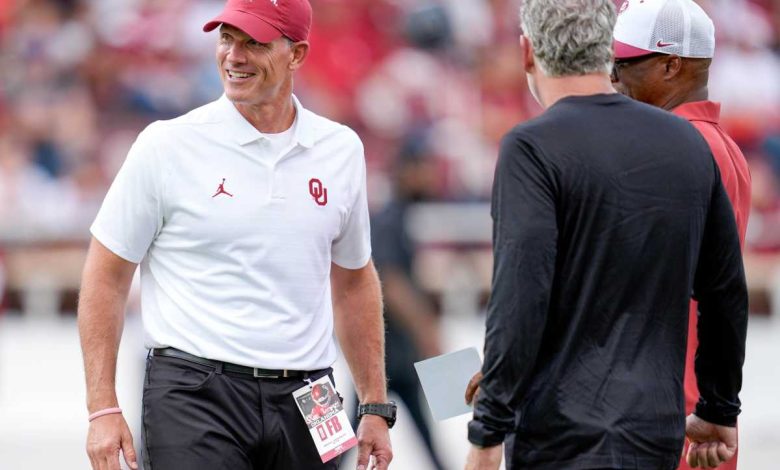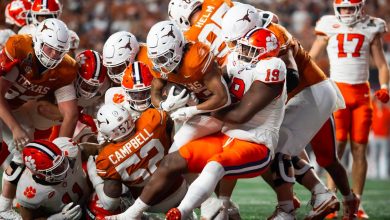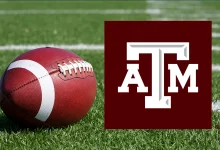Oklahoma lacks an in-state commit in 2026 due to increased competition, recruiting shifts, and program uncertainty post-Sooners’ move to the SEC, leading prospects to explore other options or delay commitments.

Oklahoma football has long been a fertile ground for recruiting top-tier talent within the state of Oklahoma. Historically, the Sooners have capitalized on their rich football tradition, coaching excellence, and a passionate local fan base to secure numerous in-state commitments. However, as of now, the 2026 recruiting cycle has seen the Sooners without an in-state commit. This development raises questions about what factors have contributed to this shift and what it indicates about Oklahoma’s current recruiting landscape, program stability, and future prospects.
This analysis will explore the key reasons behind the absence of in-state commitments, the changes in the recruiting environment, the impact of Oklahoma’s recent move to the SEC, and what strategies the program might employ moving forward to regain in-state dominance.
Historical Context: Oklahoma’s Traditional In-State Recruits
Oklahoma’s rich football heritage has historically made the state a hotbed for high school talent. The Sooner program has consistently secured commitments from top local prospects, often competing fiercely with other powerhouse programs like Texas, Alabama, Georgia, and Florida.
For decades, Oklahoma’s in-state recruiting pipeline has been robust. The state’s talent pool, combined with the program’s prestige, has resulted in a steady stream of commitments from local players, many of whom become foundational members of the team.
In previous cycles, Oklahoma’s in-state stars often committed early, driven by the appeal of playing close to home, tradition, and the opportunity to represent their state at the highest level. That trend has contributed significantly to the program’s sustained success.
Current Situation: No In-State Commitments for 2026
As of the 2026 cycle, Oklahoma has not secured an in-state commitment. This anomaly is significant, given the program’s history and the talent available within Oklahoma. Several factors have contributed to this situation:
- Increased Competition from Other Programs
The landscape of college recruiting has evolved dramatically. Other programs, particularly Texas, have stepped up their efforts to attract Oklahoma’s top prospects. Texas’ growing prominence as a recruiting powerhouse, combined with the state’s proximity and the allure of playing in the SEC, has made competition fiercer.
Additionally, national programs from the SEC, ACC, and other Power Five conferences actively court Oklahoma prospects, offering scholarships, exposure, and facilities that sometimes surpass what local programs can provide. This increased competition has led some top Oklahoma recruits to explore options outside their home state.
- Program Uncertainty Post-SEC Transition
Oklahoma’s move to the SEC, announced in 2021 and set to be fully implemented by 2025, has created a period of uncertainty among prospects. Many high school players want to see how the program adapts and performs at the highest level before committing. Some prospects might prefer to delay commitments until they see how the program develops in the new conference.
The transition has also temporarily affected recruiting pitches. The allure of playing for a traditional powerhouse in the SEC, with the associated exposure and competition, has made prospects more cautious about committing early to Oklahoma.
- Recruiting Shifts and Changing Priorities
The 2026 class is still in its early stages, and high school prospects often hold off on commitments until later in their junior or early senior years. Some Oklahoma prospects may be weighing their options, seeking offers from other programs, or waiting to see how the recruiting process unfolds.
Additionally, some prospects might be prioritizing programs that have a clearer path to immediate playing time or have demonstrated recent success at the national level. Oklahoma, in a period of transition, might not yet have established the same level of excitement or clarity as other programs.
- Perception of the Program’s Direction
Recruits and their families often consider coaching stability, program success, and future prospects. The coaching staff’s recent changes, including adjustments to staff and scheme, could influence prospects’ perception of Oklahoma’s stability and competitiveness.
While Oklahoma remains a prestigious program, some recruits may perceive the program’s future in flux, especially with the SEC move on the horizon, leading them to explore other options.
- Local and Regional Talent Dynamics
Oklahoma’s talent pool is growing, but competition within the state is intensifying. Other schools like Tulsa’s Union High School, Stillwater, and Edmond Santa Fe produce high-level talent, but recruiting efforts from Oklahoma’s own program might not yet have fully penetrated these local circuits.
Some local prospects may also be considering offers from Texas or other neighboring states with strong football traditions, especially as those programs ramp up recruiting efforts to keep top talent within their borders.
Broader Changes in College Football Recruiting Landscape
The absence of in-state commitments from Oklahoma for 2026 is emblematic of broader shifts in college football recruiting:
- Transfer Portal and NIL Impact: The evolution of NIL (Name, Image, Likeness) and the transfer portal has shifted recruiting priorities. Prospects now consider immediate playing opportunities and NIL deals, which can influence their decision-making process.
- Late-Stage Commitments: Many high-profile recruits are delaying commitments to maximize leverage, see how programs perform, or wait for more offers. This trend can lead to a temporary lull in commitments from certain regions.
- National Recruiting Scope: Programs now recruit nationally more than ever, reducing the emphasis on in-state talent. While local prospects remain important, the competitive landscape extends across the country.
- Program Perception and Success: Recruits increasingly focus on recent team success, coaching stability, and conference prestige. Oklahoma’s transition period may temporarily dampen its appeal, especially to recruits seeking immediate national exposure.
Implications for Oklahoma’s 2026 Class and Future Recruiting Strategies
The lack of in-state commitments should be viewed as a temporary phase rather than a long-term trend. Oklahoma’s recruiting staff and coaching leadership are likely aware of these dynamics and working to address them.
Potential strategies include:
- Building Relationships Early: Establishing strong relationships with local prospects well before their senior year, emphasizing program stability, and demonstrating a clear vision for success.
- Showcasing Development and Facilities: Highlighting improvements in facilities, coaching staff, and player development programs to attract local talent.
- Leveraging the SEC Move: Positioning the SEC transition as an exciting opportunity for prospects to compete at the highest level and gain national exposure.
- Fostering Community Engagement: Deepening ties with local high schools and youth programs to build loyalty and trust among prospects and their families.
- Targeting Under-the-Radar Talent: Identifying prospects who may have been overlooked or underestimated, offering them early opportunities.
Anticipated future outlook:
As Oklahoma stabilizes in the SEC and demonstrates on-field success, its recruiting momentum within the state is expected to rebound. The program’s historical reputation, combined with new conference exposure, should eventually attract top local prospects back into the fold.
The Broader Significance: What This Means for Oklahoma and College Football
The current situation reflects a broader paradigm shift in college football recruiting, where traditional recruiting pipelines are more fluid, and external factors heavily influence prospects’ decisions.
For Oklahoma, this period of transition and relative quiet in-state recruiting offers both challenges and opportunities:
- Challenge: Rebuilding trust and excitement among local prospects who may be exploring options elsewhere.
- Opportunity: Developing innovative recruiting approaches, emphasizing the program’s long-term vision, and leveraging the SEC move to attract top talent nationally.
Additionally, it underscores the importance of patience and strategic planning. Over time, as the program establishes stability, recruits will likely respond positively, restoring Oklahoma’s position as a top in-state recruiter.
Final Thoughts
Oklahoma’s absence of in-state commitments for the 2026 class is a multifaceted issue rooted in increased competition, program transition uncertainties, changing recruiting dynamics, and perceptions of future stability. While it may seem concerning now, it is a temporary phase within a broader cycle of growth and adaptation.
The program’s leadership recognizes these challenges and will likely implement strategies to reignite enthusiasm and trust within Oklahoma’s high school football community. As the Sooners fully settle into the SEC and demonstrate sustained success, their recruiting efforts—both in-state and nationally—should rebound, ensuring that the tradition of Oklahoma producing top-tier talent continues.
In the meantime, this situation serves as a vivid reminder of how external factors, conference realignment, and evolving recruiting landscapes can influence even the most storied programs, shaping their future trajectories in college football’s ever-changing environment.









